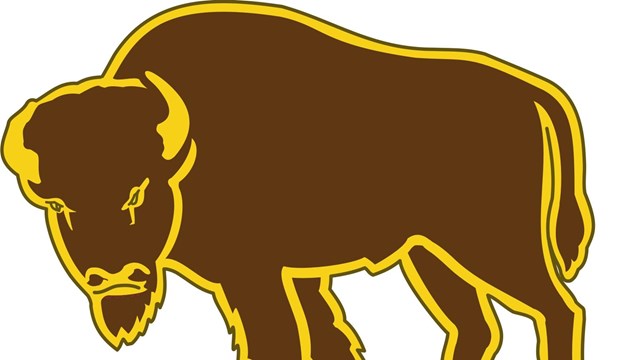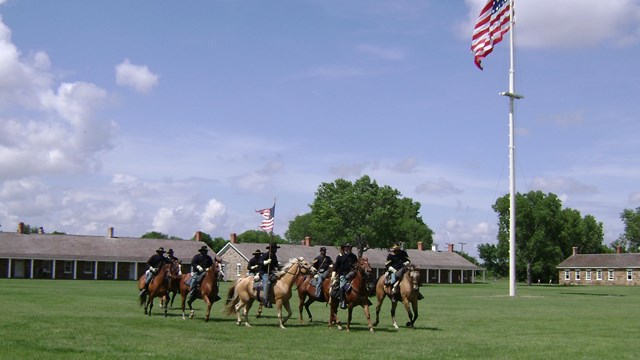
10th Cavalry Timeline
A brief overview of the 10th Cavalry's distinguished military history. 
10th Cavalry at Fort Larned
The "Buffalo Soldiers" compiled an honorable military record but still faced the racism and resentment of the post-Civil War era. |
|
In 1866 Congress restructured the Army after downsizing the huge forces raised to fight the Civil War. Recognizing the significant contribution African American men made to the war effort, they authorized the creation of six new regiments in the regular Army to be comprised solely of African American soldiers. Because of the lack of social and economic opportunities for black men after the war, many jumped at the chance for a career in the US Army. The new units were reduced to four - the 9th and 10th Cavalry and the 24th and 25th Infantry. During the 19th century, these regiments served in the Indian Wars on the Great Plains and across the West. Some of these men even went on to become the first caretakers of our national parks. Many lived to see the day when the ranks were integrated in 1948. In April 1867 the newly formed Company A of the 10th U.S. Cavalry to Fort Larned arrived at Fort Larned. Company A was one of the first of these new African American units sent west for frontier duty. The unit consisted of 98 enlisted men. Only one could read and write, but their commander, Capt. Nicholas Nolan, was impressed with their devotion to duty, hard work, and eagerness to prove themselves in the field. Their mission here was protecting the people and commerce traveling the Santa Fe Trail. The name “Buffalo Soldier” conveys a proud history. Many historians believe that the Cheyenne, Kiowa and Arapaho tribes chose the nickname because the soldiers’ hair reminded them of a buffalo’s hair. Others believe it was from bison-like tenacity in battle. The staff at Fort Larned National Historic Site honors the history and pround legacy of the Buffalo Soldiers so we can all embrace a symbol of human courage and appreciate a shared heritage. Here is a brief timeline of the 10th Cavalry's distinguished military service. |
Last updated: January 30, 2020
